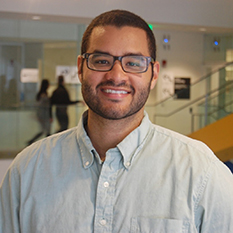Grad Life: Unexplored Worlds—the History of Blacks in Medicine
-
-
slice.mit.edu
- 1
Filed Under

Last fall, I came back to school to study a passion I had relegated to a hobby: speculative fiction worldbuilding. I’ve long been enthralled by Sci-Fi and Fantasy universes but I was never able to engage with these fictional creations in any structured manner, either as an undergraduate English major or an employee at a documentary television company.
What drew me to the Comparative Media Studies graduate program at MIT was the chance to dive into these worlds formally. But a week into a semester of required classes on theoretical frameworks, political media, and linguistic theory, I found myself still waiting for an opportunity to engage with my beloved worlds. What’s more, I had recently found out that my lab work would likewise not focus on my research interests. I would instead be working on an archive known as Blacks in American Medicine (BAM).
This project, led by science historian Kenneth Manning*, is an attempt to create a complete database of every African-American physician since 1860. As such, it contains tens of thousands of documents associated with blacks in medicine including correspondence, resumes, photos, and more. My responsibility would be ordering and digitizing these documents. As I met with Ken last fall to learn the particulars of these duties, I began to imagine the hours of sifting through dusty boxes of uninteresting records that awaited me. This was until I actually began to page through these boxes and discovered the fascinating history of blacks in medicine and the complex bygone worlds these practitioners inhabited.
Each box contained whole universes of stories that centered around a particular slice of forgotten American history. These treasure troves fleshed out not only the rich lives of doctors within but also the eras when they practiced medicine—many of which were openly hostile to them. From a letter written by a doctor trying to pass as white to a racist bulletin board notice satirizing affirmative action, each of these documents acted as a window onto a segment of black history I knew little about.

As I spent days in these rich worlds, I came to realize how important archival work like this is to understanding minority communities. Too often African-American history is seen as a monolith of several key events: slavery, Jim Crow, Harlem Renaissance, and the Civil Rights Movement. Popular entertainment pushes stories that flatten narratives, making them more palatable for consumption. As I started to wrap my head around the project, I realized that the beauty of BAM is that its vast scope gives texture back to African-American history by providing a large, rich, and complex universe of knowledge.
This semester could not be more different than my first. I’m taking a class called Critical Worldbuilding while writing a thesis currently titled “Canon Fodder: Worldbuilding, Transmedia, and Branching Path Narratives.” But even though I’ve finally dived into my treasured speculative fiction worlds, I find myself returning to BAM eager to stumble upon another document that tells a story I didn’t know I needed to hear.
*Manning is the Thomas Meloy Professor of Rhetoric/History of Science in the MIT Comparative Media Studies/Writing program.
Grad Life blog posts offer insights from current MIT graduate students on Slice of MIT.








Comments
Judith Ronat
Thu, 09/29/2016 7:59am
I would like to write directly to Evan Higgins. Can you supply an email address?
Judith Ronat class of 1956